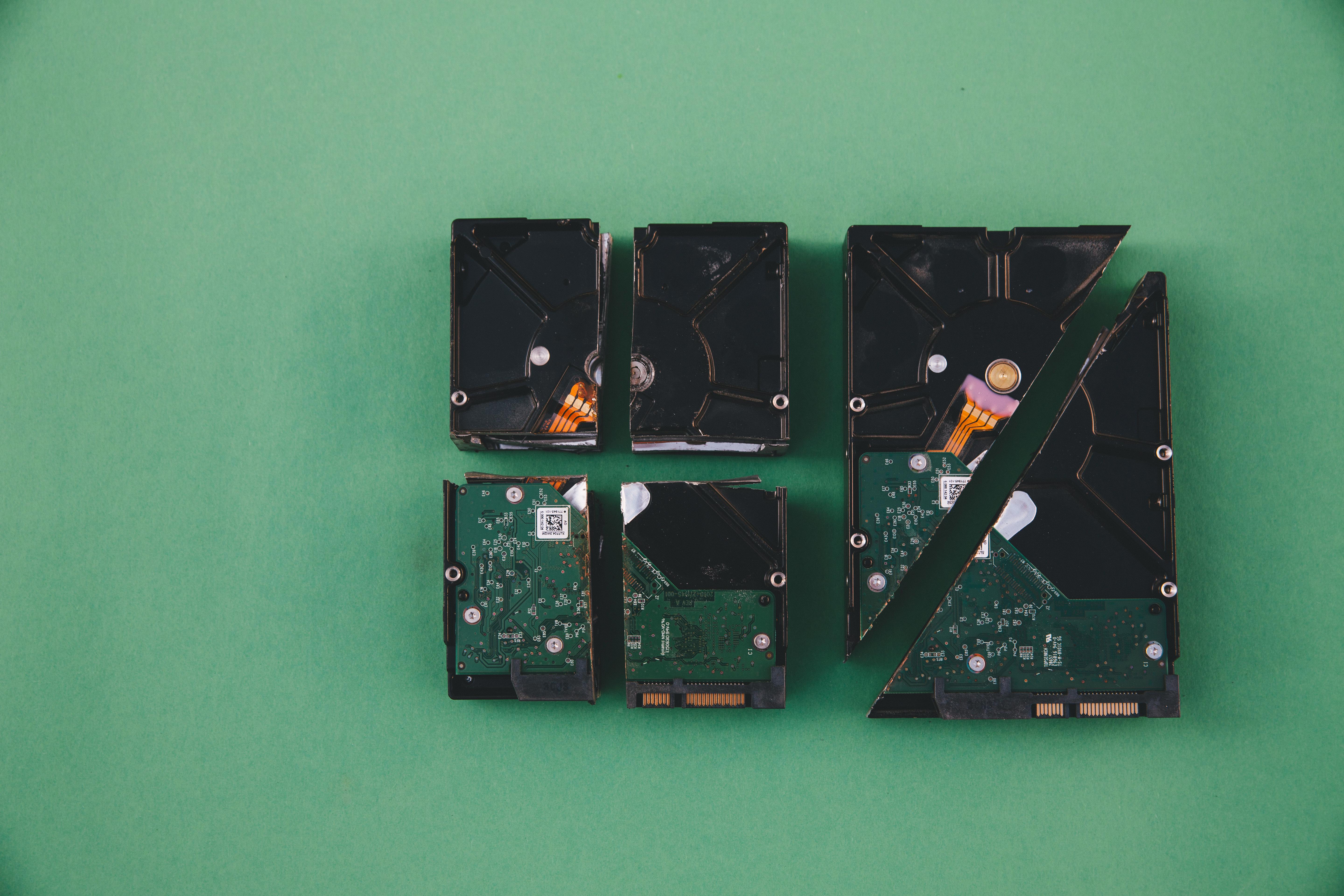Are you struggling with the Windows 11 File History Backup Stop issue? You’re not alone! Many users have encountered this frustrating problem that can lead to data loss or hinder your ability to restore files easily. In this article, we will uncover everything you need to know about why your Windows 11 File History may have stopped working and how you can fix it effectively. Whether you’re a tech novice or a seasoned pro, understanding the nuances of Windows 11 backup solutions is essential to safeguard your precious files.
The File History feature in Windows 11 is designed to automatically back up your files, but sometimes it can hit a snag and stop working altogether. Have you noticed that your backups are not occurring as scheduled? Or maybe you’re receiving error messages that leave you scratching your head? In this post, we’ll explore the common reasons behind the Windows 11 File History Backup Stop issue, including settings misconfigurations and insufficient storage space. We’ll also provide you with step-by-step solutions to get your backup process back on track.
Additionally, we will discuss the importance of regular backups and alternative methods to ensure your data remains secure, even when File History fails. Did you know that relying solely on one backup solution can be risky? Discover the best practices for data protection and learn how to optimize your Windows 11 backup strategy. Stay tuned as we dive deeper into the solutions that can help you overcome these challenges and keep your files safe!
Top 7 Reasons Your Windows 11 File History Backup Might Stop Working – And How to Fix It!

Windows 11 has brought many new features, including the File History Backup, which is essential for keeping your files safe. However, sometimes you might find your Windows 11 File History Backup stops working. If you are confused or worried about this, you’re not alone. Many users face this issue, and there’s a variety of reasons why it happens. In this article, we will explore the top 7 reasons your Windows 11 File History Backup might stop working – and how to fix it!
1. Insufficient Storage Space
One of the most common reasons for File History Backup to stop is simply lack of storage space. If your backup drive is full, Windows won’t back up your files. You should check your drive’s available space regularly. To free up space, you can delete old backups or move some of your files to another storage solution.
2. Backup Drive Issues
If your backup drive is disconnected, damaged, or not functioning properly, your backup process will fail. It’s important to regularly check the connection of the external drive you use for your backups. Try unplugging and plugging it back in, or test it on another computer to see if it works. If it’s not recognized, consider replacing it.
3. File History is Turned Off
Sometimes, users might accidentally turn off File History. If you find that your backup isn’t running, check your settings. Go to Settings > Update & Security > Backup and make sure the File History option is turned on. Once you turn it on, your backup should resume.
4. Conflicting Software
Another reason your Windows 11 File History Backup could stop is due to interference from other software. Antivirus or backup programs can block the File History service. You can try temporarily disabling these programs to see if that resolves the issue. Remember to turn them back on after testing.
5. System Updates
Windows updates can sometimes cause glitches in various system functions. If you recently updated your system and noticed File History Backup isn’t working, it may be worth checking for further updates. Sometimes, Microsoft releases patches to fix bugs caused by previous updates. Check under Settings > Update & Security.
6. Corrupted User Profile
If your user profile is corrupted, it can cause many issues, including problems with File History Backup. A quick fix could be to create a new user account and see if the backup works there. If it does, you may want to transfer your files to this new profile to ensure everything continues to back up correctly.
7. File History Service Not Running
Finally, if the File History service isn’t running, your backups will definitely stop. To check this, press Windows + R, type “services.msc” and hit Enter. Look for “File History Service,” and make sure it’s running. If it’s not, right-click and select “Start.”
In summary, if you notice your Windows 11 File History Backup stop functioning, don’t panic. Check for storage space, ensure your backup drive is working, and confirm that File History is enabled. Review your installed software for possible conflicts, keep your system updated, check your user profile, and verify that the File History service is running. By following these steps, you can troubleshoot and fix the backup issues effectively. Regular backups are essential for data security, so it’s best to address these issues promptly!
Is Your Windows 11 File History Backup Failing? Discover 5 Essential Troubleshooting Tips!

Is your Windows 11 File History Backup failing? You’re not alone. Many users face issues when trying to keep their important files secure through backups. Windows 11 has a built-in File History feature meant to help you automatically back up files, but sometimes it stop working for various reasons. Here’s what you need to know and some troubleshooting tips to get your backup back on track.
Check Your Backup Settings
First thing to do is check if File History is turned on. Sometimes, the settings might accidentally get changed. To check it, follow these steps:
- Go to Settings.
- Click on Update & Security.
- Select Backup from the side menu.
- Make sure that Automatically back up my files is turned on.
If it’s off, simply turn it back on. But if it’s already on, you might need to dig deeper.
Ensure External Drive is Connected
If you using an external drive for your backups, it has to be connected. If the drive is disconnected, Windows 11 won’t be able to back up files. Make sure your USB or external hard drive is plugged in and recognized by the system. You can check this by going to This PC to see if the drive shows up. If it doesn’t, try using another USB port or check the drive on another computer to ensure it’s working properly.
Check for Windows Updates
Another common reason for backup failures is outdated software. Microsoft frequently release updates to fix bugs and improve features. To check for updates, do this:
- Open Settings.
- Go to Windows Update.
- Click on Check for updates.
If there are any updates available, install them and restart your computer. This could resolve the backup issues you are experiencing.
Review Storage Space
Sometimes, your backup drive could be full. If there’s no space left, Windows 11 won’t be able to save new backups. You should check the storage availability on your backup device. Here’s how you can manage the space:
- Open This PC.
- Right-click on your backup drive and select Properties.
- Look under Used space and Free space.
If your drive is full, you might consider deleting old backups or transferring them to another storage solution.
Run the Troubleshooter
Windows 11 has a built-in troubleshooter that can help identify and fix problems with File History. To run it, follow these easy steps:
- Open Settings.
- Click on Update & Security.
- Select Troubleshoot.
- Click on Additional troubleshooters.
- Find File History and run the troubleshooter.
This tool might find issues that you would not normally notice, and it will help to fix them automatically.
In summary, if your Windows 11 File History backup stop working, don’t panic. Check your backup settings, make sure your external drive is connected, keep your Windows updated, review the storage space, and utilize the troubleshooter. These five essential troubleshooting tips can help you get back on track and secure your important files. Regular backups are vital, so take the time to ensure everything is functioning correctly. Start checking these points, and you’ll hopefully resolve your backup issues soon!
The Ultimate Guide to Windows 11 File History Backup: 6 Key Steps to Ensure Continuous Protection

Windows 11 has become a popular operating system since its release, and with that comes the need for effective data protection methods. File History Backup is one of the most useful features in Windows 11 for preserving your important files. However, many users experience issues with their backup settings, leading to the dreaded Windows 11 File History Backup Stop. This guide will walk you through six key steps to ensure continuous protection for your files while also addressing common problems that users face, including the frustrating moments when the backup just stops working.
Understanding Windows 11 File History Backup
File History is a built-in tool in Windows 11 that automatically backs up your files to an external drive or network location. This feature not only backs up your files but also allows you to recover previous versions of documents, photos, and other essential files. This is particularly useful if you accidentally delete something or if your files become corrupted.
Step-by-Step Guide to Setting Up File History
-
Connect an External Drive: Before you can start using File History, you need to have an external drive connected to your PC. This can be a USB drive or an external hard drive. Windows needs a designated storage location for your backups.
-
Access File History Settings: Go to Settings, then click on “Update & Security,” followed by “Backup.” Here you will see the option to set up File History. Click on “Add a drive” and select your external storage device.
-
Configure Backup Options: Once the drive is selected, you can configure how often backups are made and how long to keep them. You might want to set backups to occur every hour, which is a good balance between safety and performance.
-
Select Folders for Backup: Windows 11 automatically backs up your personal folders, but you can add other folders too. Just click on “More options” under the backup settings. Here you can choose additional folders that you want to include in the backup process.
-
Start the Backup Process: After all settings are in place, you can manually start the backup by clicking on “Back up now.” This will ensure that all your selected files are backed up immediately. Don’t forget that it may take time depending on the amount of data you have.
-
Monitoring and Troubleshooting: It’s important to check your backup status regularly. If you notice that your Windows 11 File History Backup Stop, check the settings. Sometimes, the backup might stop due to issues like insufficient disk space or disconnection from the external drive.
Common Reasons for Windows 11 File History Backup Stop
- Drive Disconnection: If the external drive gets unplugged, the backup process will stop immediately. Always ensure that your drive is connected properly.
- Insufficient Space: If your external drive doesn’t have enough space, you’ll need to either free up space or use a different drive.
- Settings Changes: If you change your File History settings, it may cause the backup to stop. Make sure all settings are correct.
Quick Tips for Continuous Backup Protection
- Regularly check your external drive for any physical issues.
- Make sure your Windows 11 is updated to the latest version to avoid bugs.
- Set reminders to check your backup status every few weeks.
- Consider using cloud storage as an additional backup method.
In conclusion, setting up and maintaining Windows 11 File History Backup is crucial for safeguarding your important files. By following these steps and being aware of potential issues, you can ensure that your data remains protected at all times. Don’t let the Windows 11 File History Backup Stop derail your data safety – take proactive steps to keep your information secure.
What Causes Windows 11 File History Backup to Stop? Uncover the 4 Common Pitfalls!

Windows 11 has been widely adopted since its release, offering improved features and functionality. One of those features is File History, a backup solution that helps user protect their important files. However, many people find themselves wondering, “What causes Windows 11 File History backup to stop?” Understanding the common pitfalls can save you from losing your vital data. In this article, we will uncover four frequent reasons why File History might halt unexpectedly.
1. Insufficient Storage Space
One of the primary reasons for Windows 11 File History backup stop is a lack of available storage. If your backup drive is full, the system cannot continue to store new versions of your files. This can lead to incomplete backups or even a complete halt in the backup process. Here are some tips on managing your storage:
- Regularly check available space on your backup drive.
- Delete unnecessary files or older versions of backups.
- Consider upgrading to a larger storage device if needed.
2. Drive Connectivity Issues
Another common issue is drive connectivity. If the external drive where File History backs up your files gets disconnected, the backup process will cease. This can occur due to a loose connection, a faulty cable, or even a failing drive. To ensure your backup runs smoothly, follow these suggestions:
- Make sure the backup drive is properly connected.
- Use high-quality cables to prevent disconnections.
- Test the drive on another computer to rule out hardware failure.
3. Conflicting Software or Settings
Sometimes, other software or settings on your computer can interfere with File History. Antivirus programs, for example, may block the backup process, thinking it’s a threat. Similarly, certain Windows settings may restrict File History from functioning properly. To troubleshoot this, consider these actions:
- Temporarily disable your antivirus and check if File History works.
- Inspect your Windows settings, especially those related to privacy and backup.
- Ensure no other backup programs are running simultaneously.
4. Corrupted System Files
Corruption in system files can also lead to issues with File History. If the files that manage the backup process are damaged, Windows might struggle to execute backups. Here’s what you can do to tackle this problem:
- Run the System File Checker tool by typing “sfc /scannow” in Command Prompt.
- Check for Windows updates that may fix underlying issues.
- Consider performing a repair install if problems persist.
Practical Examples of Each Pitfall
-
Insufficient Storage Space: Imagine you have a 500GB external hard drive, and you’ve saved multiple backups over the months. You may realize one day that there’s no room left for new backups.
-
Drive Connectivity Issues: Picture a scenario where your backup drive is connected via a USB hub, and one day it stops responding. This could be due to a faulty hub or a loose connection.
-
Conflicting Software or Settings: You might have installed a new antivirus program, and suddenly you notice that File History stopped creating backups. This could be due to the antivirus interfering with the process.
-
Corrupted System Files: If your system files have become corrupted, you might not even realize File History is failing until you check the backup status and find it hasn’t run in weeks.
Understanding these common pitfalls can help you take proactive measures to ensure your Windows 11 File History backup is consistently running. Regularly monitoring your backup settings, checking storage space, and being aware of any software changes can save you from unexpected data loss. Taking a few minutes to troubleshoot these issues can make a significant difference in your data protection strategy. Remember, a reliable backup system is essential for safeguarding your important files.
Boost Your Data Security: 5 Alternatives to Windows 11 File History Backup You Should Consider!

In today’s digital age, data security is more important than ever. With the recent announcement that Windows 11 File History Backup will stop being supported, many users in New York and beyond are left wondering what their next steps should be. If you’re looking for alternatives that can help you boost your data security, you’re in the right place. Here’s a look at five viable options to consider.
1. Cloud Storage Solutions
One of the best options to secure your data is to use cloud storage. Services like Google Drive, Dropbox, and OneDrive allows you to store your files online. You can access them from anywhere, and these platforms usually come with built-in version control, which means you can recover previous versions of your files easily.
- Google Drive: Offers 15 GB of free storage, can be accessed from any device.
- Dropbox: Known for its user-friendly interface, offers 2 GB for free.
- OneDrive: Integrated with Microsoft Office, comes with 5 GB free.
2. Third-Party Backup Software
Another trustworthy method to back up your data is by utilizing third-party software. Programs like Acronis True Image, EaseUS Todo Backup, and Macrium Reflect provide more robust backup options than the Windows 11 File History Backup. They can also perform incremental backups, which saves time and storage space.
- Acronis True Image: Offers a range of backup options, including cloud backup.
- EaseUS Todo Backup: Known for its ease of use, comes with a free version.
- Macrium Reflect: Free version is available and provides reliable disk imaging.
3. Local External Hard Drives
For those who prefer keeping their data physically close, using external hard drives is a great choice. These devices can store large amounts of data, and they don’t require an internet connection to access. You can set up automatic backups through your computer to ensure your files are safe.
- Western Digital My Passport: Portable and available in various capacities.
- Seagate Backup Plus: Offers fast transfer speeds and easy backup options.
4. Network Attached Storage (NAS)
If you have multiple devices in your home or office, Network Attached Storage (NAS) can be a game-changer. A NAS device connects to your network and allows multiple users to access and back up their data in one centralized location. This option is great for larger families or workplaces that need to share files securely.
- Synology DiskStation: Highly recommended for its user-friendly interface.
- QNAP TS-Series: Known for its powerful hardware and features.
5. File Syncing Services
Lastly, file syncing services like Resilio Sync and Syncthing can provide real-time backup solutions without relying on cloud storage. These services synchronize files between devices over your local network or the internet, ensuring your data is always up-to-date.
- Resilio Sync: Uses peer-to-peer technology for fast file transfers.
- Syncthing: Open-source option that is completely free and privacy-focused.
As Windows 11 File History Backup stops, it’s crucial to take proactive steps to secure your digital life. Each of these five alternatives offers unique benefits and features tailored to suit different needs and preferences. Whether you prefer the convenience of the cloud, the security of local storage, or the flexibility of syncing services, there’s an option out there for everyone.
In a world where data breaches and loss are common, understanding these alternatives can help you enhance your data security and peace of mind. Make the switch today, and don’t leave your important files unprotected!
Conclusion
In conclusion, addressing the issue of Windows 11 File History backup stopping is crucial for maintaining the integrity of your data. Throughout this article, we explored various causes, including system settings, connectivity issues, and software conflicts, which can disrupt the backup process. We also discussed practical solutions, such as ensuring your external drive is connected, adjusting your backup settings, and using troubleshooting tools to rectify any errors. Regular backups are essential for protecting your important files, so it’s vital to ensure that Windows 11 File History functions smoothly. As a final thought, take the time to periodically check your backup settings and conduct test restores to verify that your data is secure. Don’t wait for a data loss incident to take action—be proactive and safeguard your information today!

